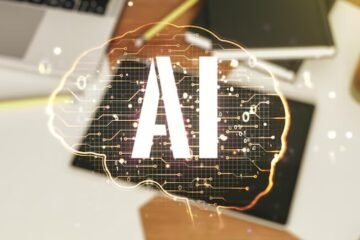Artificial intelligence (AI) is not a new phenomenon in the music industry. For decades, researchers and musicians have been exploring the possibilities of using AI to create, analyze, and recommend music. However, in recent years, AI has made significant advances in the field of music, thanks to the availability of massive data, powerful computational resources, and novel deep learning techniques. AI is now able to generate high-quality music from text descriptions, voice cloning, and other inputs, as well as assist human musicians in various aspects of music production and discovery. These developments have profound implications for the music industry and culture, as they raise questions about the role of human creativity, the legal and ethical issues of AI-generated music, and the impact of AI on musical diversity and expression.

AI and Music Creation
One of the most prominent applications of AI in music is the generation of music, lyrics, and other musical elements. AI can create music in various ways, such as by learning from existing musical data, by following rules and constraints, or by combining different sources of information. Some examples of AI tools that can generate music are:
- Google’s MusicLM: This is a hierarchical sequence-to-sequence model that can generate high-fidelity music from text-based descriptions, such as “a happy rock song with electric guitar and drums.”. It can also generate music based on both text and melody inputs, allowing for more versatility and personalization. The model operates at an impressive 24 kHz, maintaining audio quality and faithfulness to text descriptions.
- ChatGPT: This is a large language model that can generate lyrics for songs based on a given genre, mood, theme, or artist. It can also generate lyrics that rhyme, follow a meter, or match a given melody. The model is trained on a large corpus of song lyrics from various genres and languages.
- Stability AI’s Stable Audio: This is a platform that aims to empower creators by providing them with tools to generate music, voice, and sound effects. It uses diffusion-based generative models to produce realistic and diverse audio samples, such as human voices, animal sounds, musical instruments, and environmental noises. It also allows users to customize and edit their audio outputs.
These tools offer exciting possibilities for music creation, as they can help musicians overcome creative blocks, experiment with new styles and genres, collaborate with other artists, and reach new audiences. They can also democratize music creation by making it more accessible and affordable for anyone who wants to make music.
AI and Music Discovery
Another important application of AI in music is the recommendation and discovery of music, both for listeners and creators. AI can help users find new music that suits their preferences, moods, contexts, and goals, as well as discover new musical trends, genres, and cultures. Some examples of AI tools that can recommend and discover music are:
- Spotify’s Discover Weekly: This is a personalized playlist that is updated every week based on the user’s listening history, preferences, and behavior. It uses a combination of collaborative filtering, natural language processing, and audio analysis to find songs that the user might like but has not heard before. It also takes into account the popularity, diversity, and freshness of the songs.
- Shazam: This is an app that can identify songs, artists, and genres based on a short audio snippet. It uses a technique called acoustic fingerprinting, which extracts features from the audio signal and compares them with a large database of songs. It can also provide additional information, such as lyrics, videos, and related songs.
- MusicMap: This is a website that visualizes the global diversity of music, based on a taxonomy of over 2300 genres and subgenres. It uses a combination of human and machine curation, as well as data from various sources, such as Spotify, YouTube, Discogs, and Last.fm. It allows users to explore and learn about different musical styles, regions, and histories.
These tools offer exciting possibilities for music discovery, as they can help users expand their musical horizons, find new sources of inspiration, learn about different musical cultures, and enjoy music in different ways.
AI, the music industry, and culture
The applications of AI in music creation and discovery have profound implications for the music industry and culture, as they challenge the traditional notions of musical authorship, ownership, and expression. Some of the questions and issues that arise from the use of AI in music are:
- The role of human creativity: AI can generate music that is original, complex, and diverse, but can it be considered creative or artistic? Does AI-generated music have the same value and meaning as human-generated music? How does AI affect the human creative process and experience? How can human and AI musicians collaborate and co-create music?
- The legal and ethical issues of AI-generated music: Who owns the rights to AI-generated music? How can AI-generated music be licensed and monetized? How can AI-generated music be protected and credited? How can AI-generated music be regulated and controlled? How can AI-generated music be used for good or evil purposes?
- The impact of AI on musical diversity and expression: How does AI influence the musical tastes and preferences of users? How does AI affect the musical identity and culture of users? How does AI shape the musical trends and genres of the industry? How does AI promote or hinder musical innovation and experimentation?
These questions and issues are not easy to answer, as they involve complex and subjective factors such as aesthetics, emotions, values, and norms. They also require the collaboration and dialogue of various stakeholders, such as musicians, listeners, researchers, developers, regulators, and educators. The future of the music industry and culture will depend on how these questions and issues are addressed and resolved, and how a balance between technological innovation and artistic integrity is achieved.






